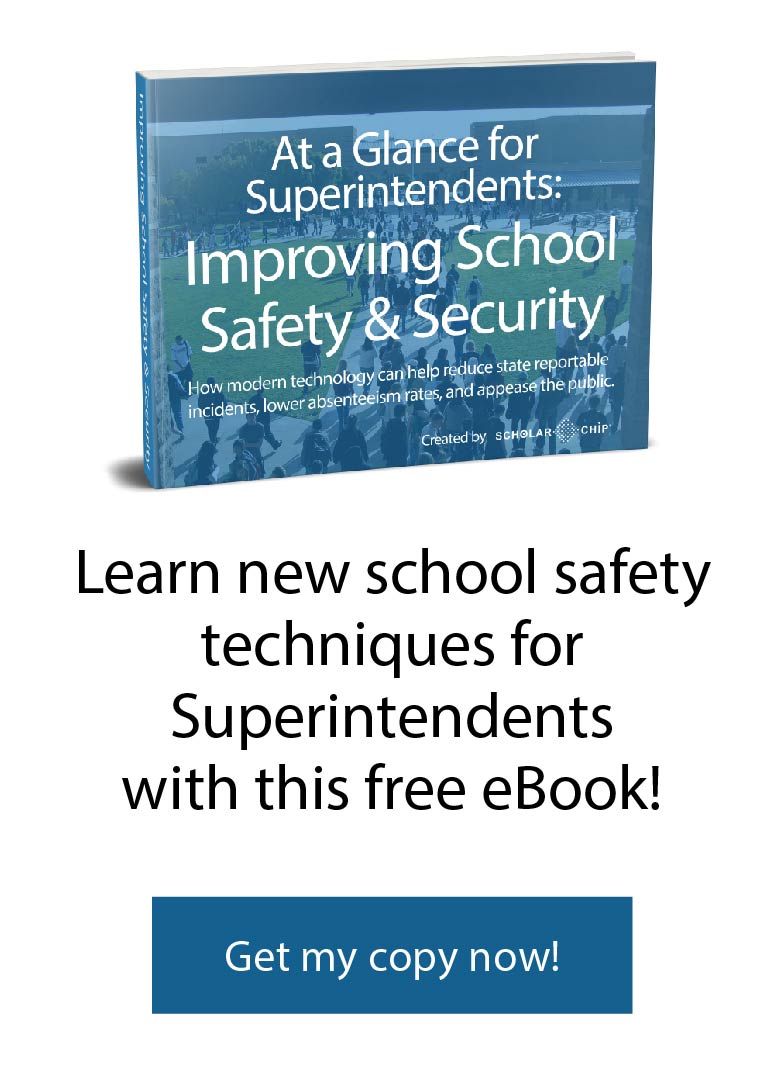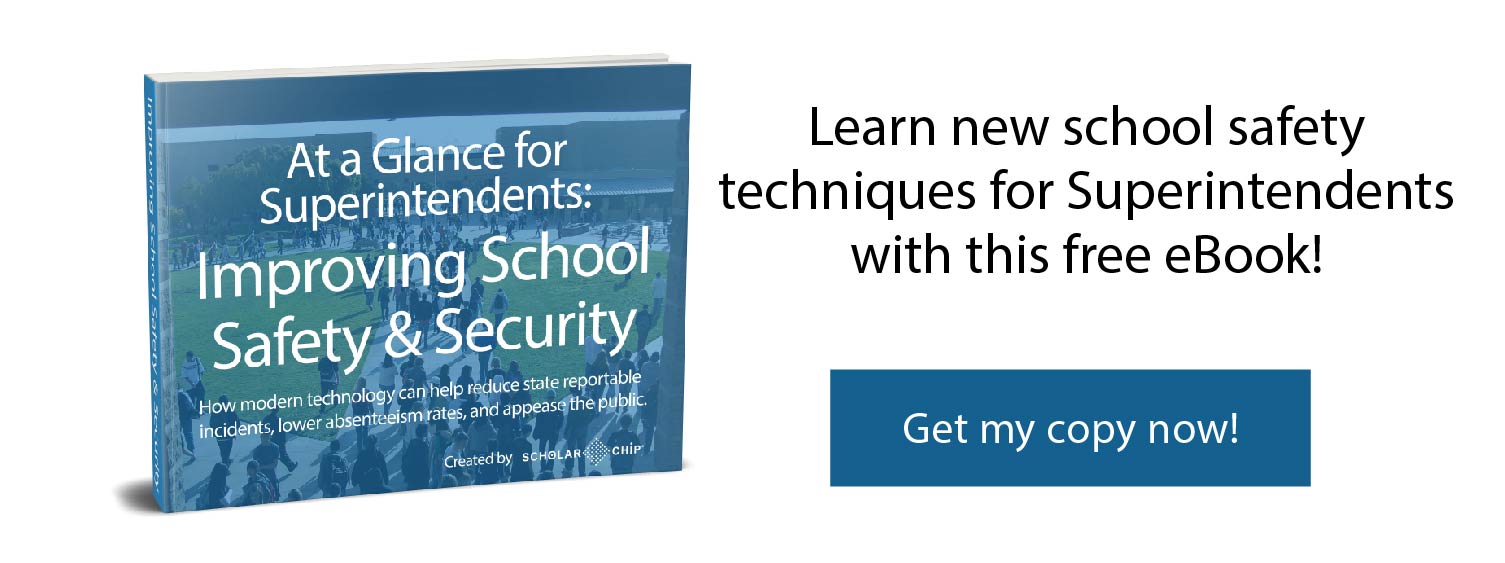In the wake of our last decade’s school tragedies, both the California education system and state government lawmakers have shifted their plans to address school violence moving forward. Collectively, their think-tank approach to school safety has begun to focus on mental health and social/emotional learning, which now leads to substantial changes for school safety laws this year, including a powerful school climate study in the years to come.
Fortunately, your school district can transition through all these changes without a total safety plan overhaul or pushbacks in staff training.
Let’s take an eagle-eye look at the upcoming school safety changes so you can recognize and understand how these school safety studies and law changes will impact the California education system—and a school administrator’s overall school safety plan.
Studying Factors Affecting School Environments
What are the new reforms targeting on behalf of the California education system?
A positive school climate.
These new reforms will now pinpoint the social and emotional safety of students, rather than solely focus on physical safety. Consequently, new study initiatives aimed at the California education system have begun and will continue throughout the first half of this decade.
A five-year, $5-million study led by the Washington DC-based American Institutes for Research (AIR) promises to be a groundbreaking examination of school safety in the California education system. Virginia Tech University’s Laboratory for the Study of Youth Inequality is partnering with AIR on the research, and Public Counsel, the Los Angeles-based public interest law firm, is also involved.
“We still have a misunderstanding of school safety, which most think of as the physical safety of students,” said Patricia Campie, AIR’s principal researcher for the study, which is federally funded through the National Institute of Justice (NIJ), the research and development arm of the US Department of Justice.
“But the more important and more difficult thing is understanding the social and emotional safety of children,” Patricia Campie highlights.
The study’s strategy on the California education system will discover several factors affecting school environments, including:
- School discipline policies and how they are enforced
- Treatment of students from different backgrounds/orientations
- People and protocols for addressing the trauma that students experience at home
- Quality of parent and community engagement
As shown, the new study—alongside the evolution of school safety incidents—is a significant influence in the new school safety changes and mandatory changes that school administrators will have to make in their overall plans. Thankfully, there is an all-in-one solution that is tailored specifically for the upcoming changes and specializes in the safety of the California education system.
3 School Safety Changes Coming to the California Education System
Multiple states have passed and imposed recent legislation and bills that impacted school safety and violence. Beyond the discussion of gun laws and background checks, government officials are searching deeper into the well-being of students at ground zero. These efforts have served as a precursor for the California education system’s narrative to take action for a positive school climate.
California’s new education assembly bills (AB), senate bills (SB), and policy proposals include the:
- AB 2291: New Bullying Reforms
- AB 2022 and SB 972: Pupil Mental Health Services
- AB 1974: Revised Collection of Pupil Debt
While there are several changes that are being implemented, these three particular legislation will have a continuous effect on other state reforms and school administrators’ safety plans and a strong influence on the new five-year California education system study results and measurements.
1. The California Bullying AB
Mandatory State-Developed Bullying/Cyberbullying Module for School Employees
AB 2291 focuses on “student well-being” and requires school employees to regularly interact with students regarding bullying incidents, in addition to an essential completion of a “bullying and cyberbullying training module” developed by state officials.
With the heavy task of managing student curriculum and student behavior in the classroom, the AB 2291 places an added duty on staff. The only way to successfully monitor students this closely while accurately performing their everyday teaching responsibilities is through the use of technology and a trusted system that brings the right individuals on board to prevent and intervene in school violence.
Imagine the benefit of eliminating these administrative tasks by using an automated referral system that works across your entire school district.
The solution: an Alternative Behavior Educator (ABE).
The ABE teaches better behavior and monitors all progress throughout a student’s career while giving administrators and teachers powerful data-driven reports that swiftly:
- Flag at-risk students.
- Monitor and chronicle progress—in real time.
- Support decision-making tasks.
The system incorporates the complete spectrum of behavior and integrates student rewards, interventions, and tracking with PowerSchool®, Infinite Campus, and other popular SIS programs.
ABE presents automated referrals and interventions that are based on repeated tardiness or truancy and returns valuable learning time to each period.
This system meets and exceeds the new AB 2291 mandate by boosting the California education system’s abilities to prevent and intervene during incidents and involves parents each step of the way. The ABE system and strategy rewards students for good behavior, which ultimately nurtures your goal for a positive school climate.
From Cyberbullying to Media Literacy
The new mandatory cyberbullying procedures that the California education system must follow the State Department requirements (Senate Bill 830), in which a school’s website must include a list of resources and instructional materials for professional development programs for teachers.
Fortunately, when you leverage an all-in-one solution, your school receives consistent Software-as-a-Service (SaaS) management and support, an admin portal, and school automation data center solutions to help you manage such programs with ease.
2. The Mental Health Needs AB
Assembly Bill 2022 and Senate Bill 972 require:
- Additional clinical professionals in your schools
- The National Suicide Prevention Lifeline phone number on school IDs
As emphasized in the previous assembly bill’s strategy, an all-in-one solution through ABE, the mandate to have sufficient clinical professionals handle mental health and wellness issues can be optimized through the real-time/automated referral system. This solution incorporates:
- Innovation of the Smart ID card, which can be designed specifically for your school with the required information and cannot be replicated
- Secure door access throughout your premises
- Guarantee to help relevant staff monitor real-time activities and behavior
- Provide students with a positive climate in which they can gain support
Having ABE in your school is a critical part of meeting the new school safety laws because it includes student and staff Smart ID, large group and classroom attendance, visitor management, cafeteria POS, secure door access, and mobile monitoring achievement.
3. The Collection of Debt AB
AB 1974 Revised Collection of Pupil Debt is a new act that prohibits educational entities from taking negative actions against a pupil or former pupil because of a debt owed to the educational entity, including, among other things, denying or withholding grades or transcripts, or denying or withholding a diploma.
How Your School Can Eliminate Social-Economic Stigmas for Your Students
One of the most powerful forces behind Smart ID technology for student IDs is not only seen but felt.
When you choose the best Smart ID system provider, you are offering confidentiality to your students and helping eliminate social stigmas caused by possible embarrassing situations (such as purchasing lunch/free lunch programs), thus preventing social-emotional-related bullying and other behavior responses/acts of violence.
Become Safe, Secure, and Efficient
Each new school safety change, revised assembly bill, and upcoming California education system study can easily fit into your current safety and security plans. Undoubtedly, you are already faced with the task and responsibilities to protect your students and staff and to meet the requirements of these mandates.
Therefore, searching for the right automated, modular, integrated security and operations services for your school should not be the challenge that hinders your progress.
ScholarChip offers a solution called Alternative Behavior Educator (ABE). This innovative program enables school leaders to identify, monitor, and improve student behavior throughout a student’s career, while giving administrators and teachers powerful data-driven reports that quickly flag at-risk students, help monitor and chronicle progress, and support decision-making tasks. The ScholarChip system incorporates the complete spectrum of behavior and integrates student rewards, interventions, and tracking with PowerSchool®, Infinite Campus, and other popular SIS platforms.
To learn how ScholarChip can help keep your schools safer and more secure, learn more about the many solutions ScholarChip provides, or get free recommendations, feel free to contact us for a free consultation!


